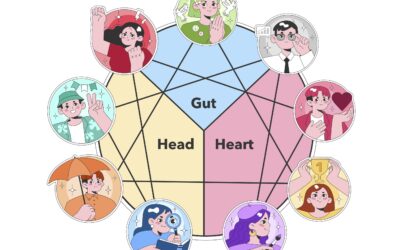Several years ago, a friend and I attended a midday matinee. I can’t remember much about the movie, except that it was a delicious pleasure. I remember moving from the inky blackness of the theater, out the front door and into the dazzling light of a late California afternoon. I couldn’t see a thing. The transition from darkness to dazzle had been too abrupt. My eyes needed time to adjust. That experience reminds me of Jesus’ disciples. Their eyes also seemed to need time to adjust to the risen Christ in their midst.
Do you ever wonder what the risen Christ looked like? No one knows. There are no selfies, no video or audio recordings. The Gospels attest to a series of post-resurrection appearances because someone returning from the dead was remarkable. But even more remarkably, no one seemed to recognize the earthly Jesus in the risen Christ—most notably the people who’d known him best.
EXAMINE THE EVIDENCE
John’s Gospel tells of a sighting by Mary Magdalene, who found the stone rolled away (John 20:1-18). She left to tell Peter and John, who returned with her to find linen wrappings where Jesus’ body had been. Deeply troubled, Mary entered the tomb and found it occupied by angels. After talking with these divine beings, she turned around and saw the risen Christ, but she “did not know that it was Jesus” (20:14). Mary presumed him to be a gardener and demanded he hand over Jesus’ body. Only when he spoke her name did Mary identify the gardener as her Lord.
Later that same day, Jesus appeared to all the disciples except Thomas, making it through locked doors to bless them with his peace (John 20:19-23), even though all, except John, “the beloved disciple,” had deserted him at the crucifixion. Christ displayed his wounded hands and side to the feckless and frightened disciples. Maybe he had to give them some evidence because they would not have recognized him otherwise. When Thomas joined the group for a second post-resurrection appearance a week later, he not only wanted to see Jesus’ hands and side, he demanded hands-on proof (20:25).
John’s Gospel concludes with an even more puzzling sighting of the risen Christ—this time with Jesus appearing at the Sea of Tiberias. The disciples had gone back to their old lives of fishing. At first light, they set out. As the sun rose, they noticed someone on the beach, watching them, “but the disciples did not know that it was Jesus” (John 21:4).
As with Mary Magdalene at the tomb, the risen Christ again talks to them. Here, too, conversation fails to provoke recognition. Only when the catch yielded more than they could handle did the disciples recognize Jesus. John shouted out: “It is the Lord!” His cry prompted Peter to swim to shore (21:7).
A NEW, RESURRECTED STATE
Luke’s Gospel carries its own stories of the disciples’ failure to recognize the risen Christ. After the confounding discovery of the empty tomb, two of Jesus’ followers made their way to Emmaus, a town safely outside Jerusalem’s systems of surveillance. Along the way, they were joined by a stranger, who asked them for the latest news. The stranger interpreted the Hebrew Scriptures to them, demonstrating how the events they were discussing had been foreshadowed. When the two followers reached their destination at dusk, they urged the rabbi to join them for dinner. It was only when he blessed the meal that they recognized this itinerant rabbi as Jesus (Luke 24:31). As if he felt obliged to explain the followers’ cluelessness, Luke proposed that they didn’t see Jesus “because their eyes were kept from recognizing him” (24:16).
Yet how could the two followers walk all afternoon with their master and fail to recognize him? The encounter disturbed the two enough that they returned to Jerusalem that very night to find the other disciples. Suddenly Jesus was in their midst. Instead of greeting him with joy, the people were “startled and terrified, and thought that they were seeing a ghost” (24:37).
No one immediately recognized the earthly Jesus in the risen Christ. Indeed, the people who should have known him bestconsistently mistook him for a ghost, a gardener, a harbormaster and an itinerant rabbi. Whether from faithlessness or temporary myopia or some divinely-induced blindness, the disciples could not see the risen Christ in their midst. Their eyes needed time to adjust.
Happily, they were given that time. The risen Christ returned: to forgive the disciples their betrayals, great and small (John 20, 21); to show them that there is life beyond fishing and tax collecting, charging them to “go and make disciples of all nations” (Matthew 28:19); to repeat the call that orients their ministries—“follow me” (John 21:19, 22); and touchingly, to cook them breakfast, because they will need food for the journey (John 21:12). Disciples today should celebrate the First Breakfast alongside the Last Supper!
Instead of ascending directly to his Father, the risen Christ stuck around and let people get used to seeing him in his new, resurrected state. The time between the resurrection and the ascension also gave their hearts time to adjust to the journeys that now lay before them.
M. E. Stortz is the Bernhard M. Christensen Professor of Religion and Vocation at Augsburg University in Minneapolis. She is author of Called to Follow: Journeys in John (2017). She is a frequent contributor to Gather.
This article is excerpted from the April 2020 issue of Gather magazine. To read more like it, subscribe to Gather.
A priceless gift
In 1993, my husband and I moved from Southern California where I’d grown up to Berkeley, where I...
Be not afraid!
March 25th is the celebration of the Annunciation. On this day, we remember the angel coming to...
In the image of God
If you were to attend Sunday service at Holly Grove Lutheran Church in Lexington, North Carolina,...





